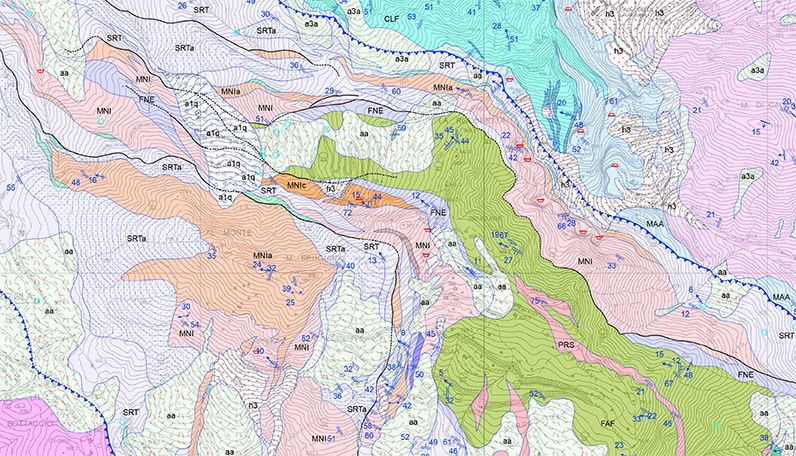As well as producing the Unitary Geological Map at a scale of 1:10,000, the project also includes the production of a series of experimental maps, aimed at specific environmental criticalities, identified in collaboration with public bodies, trade associations and professional orders. After years of work and an intense commitment of personnel and resources within the framework of research projects financed by the Cipe and aimed at the creation of tools for the knowledge and prevention of environmental risks, the Geological Map of Tuscany at a scale of 1:10,000 has now been completed.
The Geo-Technology Centre of the University of Siena, in cooperation with other subjects (University of Pisa, INFN, LAC and Matraia srl), has completed the project according to the specifications of the agreement, providing a product of great cognitive value and strategic importance for a sustainable development of the territory, by means of technologically up-to-date instruments such as a territorial database with an adequate well-articulated structure and relative Web Cartograhy service for the diffusion and sharing of the information contained therein. These knowledge tools on some specific aspects of the territory could be extended to the whole Region according to the needs expressed by public bodies, enterprises, professionals and their associations and professional orders, research bodies, etc.
The final objective is to produce a tool for work and development in the agricultural-forestry, mining-extraction, construction, urban planning-infrastructure and energy sectors, with more or less direct repercussions on energy research and production, water, waste disposal and the ability to plan environmentally sustainable development. The Regional Geological Map aims to become a point of reference for institutions, research centres, and the professional associations of Engineers, Architects, Geometers, Geologists, Agronomists, Foresters, Land Surveyors and Agro-technicians. The most direct beneficiaries of the final product will be the 10 Tuscan Provinces, the 287 municipalities, the 14 Mountain Communities and the Basin Authorities, with positive effects on the economic and productive system as a whole.




